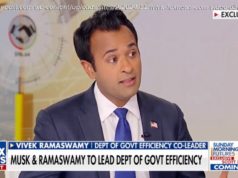WASHINGTON — As a government shutdown entered its second day Sunday, Congress and President Donald Trump were poised to face deepening criticism unless the
WASHINGTON — As a government shutdown entered its second day Sunday, Congress and President Donald Trump were poised to face deepening criticism unless they made a deal to reopen the government before the workweek begins.
A rare weekend schedule continued on Capitol Hill, with voting possible, but negotiations over a possible stopgap measure appeared stalemated along partisan lines.
Uncertainty over whether the shutdown would extend into Monday and beyond created hardship for many of the 2.3 million federal employees who don’t yet know if their offices will be closed and if they will lose pay.
It was either the Trump shutdown or the Schumer shutdown, depending on whether the blame came from Republicans backing the president or from Democrats standing with Senate Minority Leader Charles E. Schumer.
Trump weighed in early Sunday by blaming Democrats for the impasse and urging Senate Republicans to change the rules to allow debate to end with a simple majority, not the 60 votes now required.
“If stalemate continues,” Trump wrote on Twitter, Republicans should use the “nuclear option” to change Senate rules and try to pass a long-term spending bill with a simple majority.
But after a day of finger-pointing but little apparent progress Saturday, there was no sign Sunday morning of any intervention by the White House to end the partisan standoff.
One proposal, to temporarily fund the government through Feb. 8, was being pushed for a Sunday vote by Senate Majority Leader Mitch McConnell.
But without the consent of all senators, complicated Senate rules would not allow a roll call until 1 a.m. Monday, adding to the sense of chaos and confusion.
“Shutdowns have consequences,” McConnell said as he closed Saturday’s Senate session without a resolution to the standoff.
Communications broke down between Trump and Schumer after the minority leader complained that the president backed out of an emerging deal before the midnight Friday deadline to fund the government, and said it was like negotiating “with Jell-O.”
Instead, rank-and-file lawmakers began taking action on their own.
A bipartisan group of 19 senators met behind privately to try to reach a compromise, and a similarly mixed group of Republicans and Democrats met in the House. But those efforts have yet to produce a solution.
The shutdown began at midnight Friday when Democrats in the Senate, joined by a few of Republicans, blocked a House-passed bill to temporarily fund the government for four weeks.
The federal government has been running on a series of four stopgap funding bills since the 2018 fiscal year began Oct. 1 because Congress cannot agree on budget levels.
Republicans, who are the majority in the House and Senate, want increased military funding, and Democrats insist on parity for other federal operations.
The Republican hold on the Senate is slim, just 51 seats, while 60 votes are typically needed to break a filibuster and pass most legislation. So Democrats, who hold 49 seats, used their leverage to demand concessions on budgeting, immigration and other issues.
Tops on the Democrats’ priority list is legislation to protect young immigrants brought to the country illegally as children from deportation before the administration ends the Deferred Action for Childhood Arrivals program, which allows them two-year permits to work and live in the United States.
The young immigrants have flooded Capitol Hill offices since Trump announced he would end the Obama administration’s DACA program in March and asked Congress to develop a solution.
But Trump, and Republicans, also want a overhaul of immigration law to reduce the flow of legal migrants as well as stem the flow of illegal immigration. Democrats say the White House demands go beyond the outlines of an initial, more limited deal to protect DACA beneficiaries in exchange for more border security.
Immigration advocates fear deportations of the young immigrants will rise as the temporary permits expire and the administration fights to end DACA in court.
“You ask me how they’re doing? I think they are terrified,” Rep. Luis Correa said of the young immigrants. “This is not a scenario anybody expected.”
Lawmakers on both sides also want to extend the Children’s Health Insurance Program, provide more disaster assistance to states hit hard by hurricanes and wildfires, and focus on other issues that have bipartisan backing.






